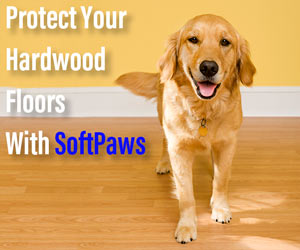Ununited Anconeal Process

An ununited anconeal process is one of the three main causes of elbow dysplasia in dogs. The anconeal process is a bony outcropping on the back of the ulna. In a healthy dog, the anconeal process will unite to the ulna between 4 and 5 months of age. This does not occur in dogs with ununited anconeal process, causing affected dogs pain with movement of the elbow joint. The pain is due to stress put on the abnormal bone structure.
Breeds, Gender, and Age Most Commonly Affected by Ununited Anconeal Process
- German Shepherds, Labrador Retrievers, Bernese Mountain Dogs and Rottweilers are diagnosed with ununited anconeal process more frequently than other dog breeds.
- This condition is found most often in young dogs (under 1 year), but sometimes is not diagnosed until they are a little older.
Presentations and Signs of Ununited Anconeal Process
- Pain: Pain can sometimes be difficult to gauge in animals, as they don't always cry out or show otherwise overt signs.
- Crepitus: Crackling sounds associated with movement of the elbow. This is caused by arthritis and occurs if the condition is allowed to progress. This is most often diagnosed in older dogs.
- Decreased range of motion: The leg is not able to flex or extend to its normal degree.
- Swelling: The tissue surrounding the elbow joint may be enlarged.
Diagnosis of Ununited Anconeal Process
Ununited anconeal process is diagnosed through a veterinarian's examination and x-rays. A certain x-ray position called a medio-lateral flexed view is the best way to visualize this condition.
Treatment of Ununited Anconeal Process
Non-surgical options do not usually provide the desired result of pain relief for ununited anconeal process. NSAID medications such as Rimadyl or Deramaxx do not work as well for this cause of elbow dysplasia as for the others.
Surgery, in many cases, works well if the condition is caught early, but owners should be aware that any component of arthritis that is in the elbow joint will continue to cause the dog pain, even after surgery. The most frequently used and effective surgery for this disease is the removal of the unfused bone. There are other options that are used less often such as a lag screw or osteotomy.
If you and your veterinarian decide that surgery is the best option for your dog, it is recommended to have the surgery done via arthroscopy by a board certified veterinary orthopedic surgeon. This specialized veterinarian will decide which form of surgery is best for your pet based on many factors.
Prevention of Ununited Anconeal Process
- Because genetics plays a big part in the development of ununited anconeal process in the general dog population, its incidence can be reduced by requiring those who produce susceptible breeds to observe certain procedures. Veterinarians can certify that breeding dogs do not have this and other orthopedic conditions before they produce offspring. If you are buying a dog from a breeder, be sure to ask for proof that the parents have been appropriately certified.
- If you adopt a dog rather than using a breeder, be sure to feed a high quality diet (follow your veterinarian's recommendations for the dog's breed, age, and condition). Keep your pet at a healthy weight by not overfeeding and providing regular exercise in order to decrease the risk of this and other joint problems.
Prognosis of Ununited Anconeal Process
- The outlook for this condition is good if surgical intervention is done early, before arthritis sets in.
- With only medical treatment, dogs with ununited anconeal process will develop progressive arthritis in the elbow joint and may no longer be good candidates for surgery.
Alternative Therapies for Ununited Anconeal Process
- There is no harm and some good evidence that giving glucosamine* and chondroitin sulfate supplementation as directed by your veterinarian may slow the progression of the arthritis associated with elbow dysplasia. Omega 3 fatty acids* have also been used as a nutritional supplement that may benefit these dogs. These medications may help prevent ongoing damage to the joint and also decrease pain and swelling.
- If you are feeding your large breed growing puppy a homemade diet, it is very important to monitor mineral amounts in the food. For example, you do not want to give these dogs too much calcium. If you decide to feed a homemade diet, it is critical to use one developed by a veterinary nutritionist.
Notes:
*Glucosamine supplements should be in the form of glucosamine hydrochloride (HCl) not glucosamine sulfate as glucosamine HCl has better bioavailability.
*Omega 3 fatty acids should be in the form of fish or krill oils, not flaxseed. Fish and krill oils provide the correct forms of anti-inflammatory omega 3s, whereas flaxseed requires conversion to the anti-inflammatory compounds and dogs have limited amounts of the enzyme required to make this conversion.
References
- Cahn, C. L.(2010). The Merck Veterinary Manual. John Wiley and Sons.
- Tilley LP, S. F.(2011). The Five-Minute Veterinary Consult: Canine and Feline. Wiley and Sons.
You might also like:
Causes of Lameness in Dogs: An Overview
Anterior Cruciate Ligament Injury in Dogs
Medial Fragmented Coronoid Process
Osteochondritis Dessicans of the Humeral Condyle (OCD)
Panosteitis in Dogs: Growing Pains
Disclaimer: This website is not intended to replace professional consultation, diagnosis, or treatment by a licensed veterinarian. If you require any veterinary related advice, contact your veterinarian promptly. Information at DogHealth.com is exclusively of a general reference nature. Do not disregard veterinary advice or delay treatment as a result of accessing information at this site. Just Answer is an external service not affiliated with DogHealth.com.

